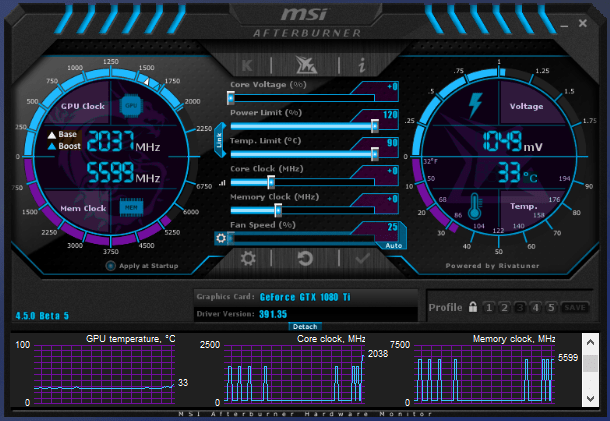

That's basically it.ītw, MSI Afterburner probably doesn't know how to set voltage because RTX 3000 series is so new and I don't think there were many updates for this series. Draws 400 watts under max load, for reference. Having it cooled well helps too so either adjust the fan curve to be more aggressive or ensure case has good ventilation instead. i7 8086k - EVGA Z370 Classified K - G.Skill Trident Z RGB - WD SN750 - Jedi Order Titan Xp - Hyper 212 Black (with RGB Riing flair) - EVGA G3 650W. Generally just raising temperature and power limit should be enough for the card to squeeze out last drop of performance on its own. Almost not worth the effort really if you don't understand it as automatic boosting will do good enough job. Check the box Enable user-defined software automatic fan control. You need to Enable fan speed using the settings menu. Which usually translates to a 1-3 fps boost here and there. Why Can’t I Change my Fan Speed in MSI Afterburner You can’t change fan speed because it’s disabled. You increase that and eventually you return at hitting the power limit again despite having it raised. You're then starting to hit voltage limit. Then you start hitting temperature limit. You're hitting power limit, so you raise it. Usually the overclocking of modern GTX and RTX cards goes like this: Reason for that are built in limits that you can't really bypass other than just pushing them higher like power target and temp limit. Manually overclocking will usually only give you rather insignificant results. It's very hard to overclock these modern cards anyway as they run pretty much maxed out out of the box. You're essentially just raising the existing voltage curve by increasing the voltage.

Probably Maxwell 1 even (GTX 700 series, though I never used that one). Anyways, no matter what I do I can't get the on screen display to. You can't really change voltage on NVIDIA cards since Maxwell 2 (GTX 900 series). 1 I'm not a fan of EVGA Precision at all, MSI Afterburner is a much better program IMO.


 0 kommentar(er)
0 kommentar(er)
